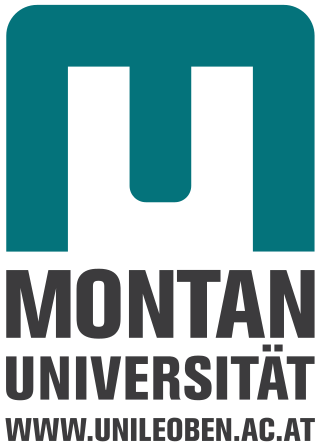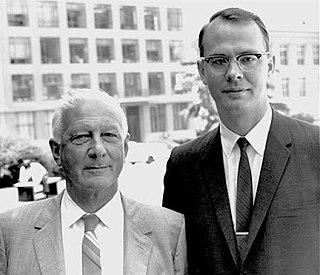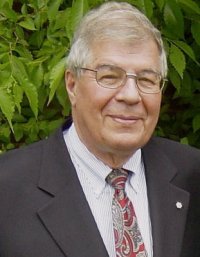Related Research Articles

Petroleum engineering is a field of engineering concerned with the activities related to the production of Hydrocarbons, which can be either crude oil or natural gas. Exploration and production are deemed to fall within the upstream sector of the oil and gas industry. Exploration, by earth scientists, and petroleum engineering are the oil and gas industry's two main subsurface disciplines, which focus on maximizing economic recovery of hydrocarbons from subsurface reservoirs. Petroleum geology and geophysics focus on provision of a static description of the hydrocarbon reservoir rock, while petroleum engineering focuses on estimation of the recoverable volume of this resource using a detailed understanding of the physical behavior of oil, water and gas within porous rock at very high pressure.
The ABET is a non-governmental organization that accredits post-secondary education programs in applied and natural sciences, computing, engineering and engineering technology.

The University of Leoben in Austria is the country's university for mining, metallurgy and materials. It was founded on 4 November 1840 as the Steiermärkisch-Ständische Montanlehranstalt in Vordernberg, Styria, Austria's mining region. In 1849 Peter Tunner relocated the university to nearby Leoben. That year the university had a mere 48 students enrolled.
The American Institute of Mining, Metallurgical, and Petroleum Engineers (AIME) is a professional association for mining and metallurgy, with over 145,000 members. It was founded in 1871 by 22 mining engineers in Wilkes-Barre, Pennsylvania, United States, being one of the first national engineering societies in the country. Its charter is to "advance and disseminate, through the programs of the Member Societies, knowledge of engineering and the arts and sciences involved in the production and use of minerals, metals, energy sources and materials for the benefit of humankind."

Antoine Marc Gaudin was a metallurgist who laid the foundation for understanding the scientific principles of the froth flotation process in the minerals industry. He was also a professor at the Massachusetts Institute of Technology, and during World War II developed there the ore-processing techniques needed to extract uranium from its low grade ores for the Manhattan Project. He was a founding member of the National Academy of Engineering.

Raymond Alexander Price, is a Canadian geologist. He has used his research on the structure and tectonics of North America’s lithosphere to produce extensive geological maps. He has also provided guidance for nuclear fuel waste disposal and reports on the human contribution to Global warming.
The American Engineers' Council for Professional Development or simply the Engineers' Council for Professional Development (ECPD), established in June 1932, was an engineering professional body dedicated to the education, accreditation, regulation and professional development of the engineering professionals and students in the United States. ECPD grew and has changed its name to ABET, Inc. and its focus solely to accreditation.
Thomas Rickard (1866–1911) was a mining engineer, an early resident of Berkeley, California, and served as the last President of the Town Board of Trustees from 1903 to 1909, before the new city charter went into effect, creating the office of Mayor.
OneMine is non-profit entity and searchable online global mining and minerals library.

William Embry Wrather was an American geologist.
The John Fritz Medal has been awarded annually since 1902 by the American Association of Engineering Societies (AAES) for "outstanding scientific or industrial achievements". The medal was created for the 80th birthday of John Fritz, who lived between 1822 and 1913. When AAES was dissolved in 2020, the administration of the Fritz medal was transferred to the American Institute of Mining, Metallurgical, and Petroleum Engineers (AIME), and is currently coordinated by AIME member society, the Society of Mining, Metallurgy, & Exploration (SME).

Eckley Brinton Coxe was an American mining engineer, coal baron, state senator and philanthropist from Pennsylvania. He was a co-founder of the Coxe Brothers and Company coal mining operation which became the largest individual producer of anthracite coal in the United States at the time.
The Engineering and Technology History Wiki (ETHW) is a MediaWiki-based website dedicated to the history of technology. It started operating in 2015. It consists of articles, first-hand accounts, oral histories, landmarks and milestones.

James Gayley was an American chemist and steel metallurgist who served as managing director of the Carnegie Steel Company, and as the first vice president of U.S. Steel from 1901 to 1908. He is credited with many inventions which greatly improved the fields of steel and iron making. For his contributions in the field of metallurgy, he was awarded the Elliott Cresson Medal in 1909, and the Perkin Medal in 1913.
Richard Carl Bradt was an American materials engineer.
Dan J. Thoma is an American metallurgist who is a Professor in the Department of Materials Science and Engineering at the University of Wisconsin–Madison. He is the director of the Grainger Institute for Engineering at the University of Wisconsin–Madison. Thoma is also a past President of the American Institute of Mining, Metallurgical, and Petroleum Engineers (AIME). Thoma is well-known for his research on 3D printing technology, which he has carried out for over two decades.
John Robert Suman was a geologist, petroleum engineer, and business executive.
Thomas Victor Falkie was an American mining engineer and educator. He served as the 14th director of the U.S. Bureau of Mines.
Eben Erskine Olcott was an American mining engineer. He was president of the Hudson River Day Line and served as two-time president of the American Institute of Mining, Metallurgical, and Petroleum Engineers in 1901–02.
References
- 1 2 3 Rothenberg, Marc (2012), History of Science in United States: An Encyclopedia, Routledge, p. 28, ISBN 9781135583187 .
- ↑ Basta, Nicholas; Price, Wilma (May 27, 1985), "AAES narrows its scope, gives up unifying role", Chemical Engineering, 92 (11): 13.
- ↑ AAES members Archived April 30, 2016, at the Wayback Machine , retrieved June 16, 2015.
- ↑ "American Association of Engineering Societies (AAES) and National Academy of Engineers (NAE)". The American Institute of Mining, Metallurgical, and Petroleum Engineers. The American Institute of Mining, Metallurgical, and Petroleum Engineers. Retrieved September 11, 2023.
- ↑ "Important message". Archived from the original on November 13, 2019. Retrieved November 13, 2019.